Domain III—Curricular Knowledge and Instructional Practices
Competency 5: Apply knowledge of implementing curriculum through relevant and appropriate content and specialized instructional strategies to guide and support students' learning and development.
TEA, Specially Designed Instruction Guide
This guide includes resources that help teachers understand, develop, implement, and evaluate the specially designed instruction (SDI) students with disabilities need to access and progress in the general curriculum. In addition, it clarifies concepts related to, but distinct from, specially designed instruction, including accommodations, modifications, and high yield instructional strategies.
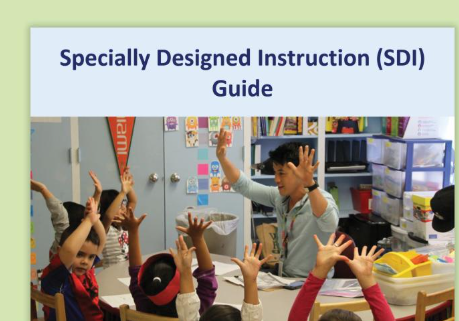
Specially Designed Instruction (SDI) Field User Guide for Bluebonnet Learning Secondary Mathematics
This document provides multiple ways to approach and plan for the provision of SDI and presents multiple lenses through which readers can examine the connections between the tools and content in the Bluebonnet Learning Secondary Math and the components of SDI, which are: content, methodology, and delivery of instruction.
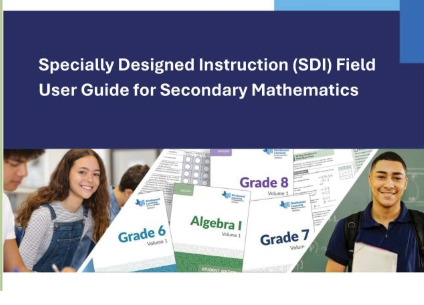
Specially Designed Instruction (SDI) Field User Guide for Bluebonnet Learning K-5 Mathematics
This document provides multiple ways to approach and plan for the provision of SDI and presents multiple lenses through which readers can examine the connections between the tools and content in the Bluebonnet Learning K-5 Math and the components of SDI, which are: content, methodology, and delivery of instruction.
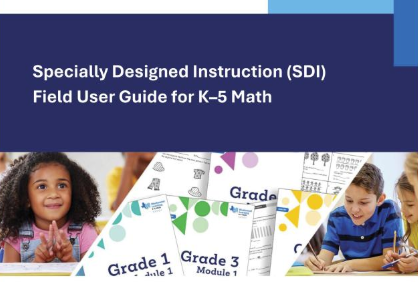
This document provides multiple ways to approach and plan for the provision of SDI and presents multiple lenses through which readers can examine the connections between the tools and content in the Bluebonnet Learning K-5 Reading Language Arts (RLA) and the components of SDI, which are: content, methodology, and delivery of instruction.
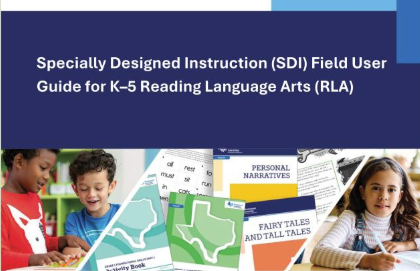
This asynchronous training will address the science of teaching reading and include an overview of what skills need to be mastered to become a proficient reader, how the brain learns to read and, the characteristics of dyslexia and dysgraphia. It will also address how a student’s learning abilities associated with reading can impact a student’s ability to read and what instruction and accommodations can remove the barriers of learning.

Through hands-on activities, participants will explore how learning abilities associated with disabilities, including dyslexia and disorders related to dyslexia, impact the learning of whole number addition and subtraction. In this session, participants will build knowledge and understanding of how instructional supports, including the Universal Design for Learning (UDL) Guidelines along with assistive technology, can be used to accommodate and reduce the impact of a disability.
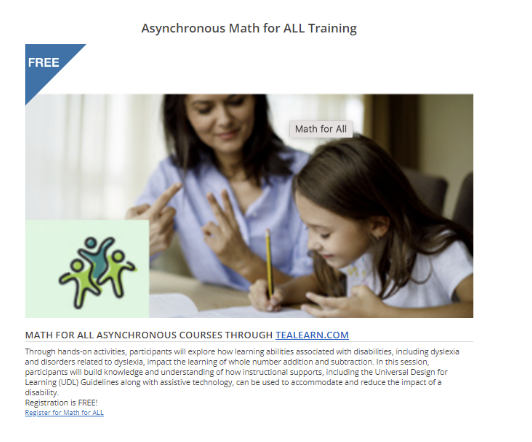
TEA, "Literacy Instruction for Students with Autism"
In this course, you will first develop an understanding of the literacy needs of individuals with autism as the foundation for framing their instruction. Using video examples, we will then share specific strategies for engaging individuals with autism in increasing complex text and academic content, and supporting students in applying literacy skills to their social experiences.

TEA, "Curriculum Framework": Texas SPED Support
In this video, an educator reviews how she uses the Curriculum Framework documents.
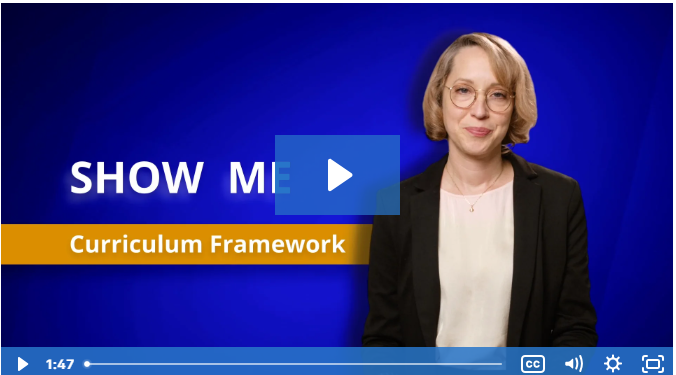
TEA, "Vertical Alignment": Texas SPED Support
In this video, an educator reviews how she uses the TEKS Vertical Alignment documents.
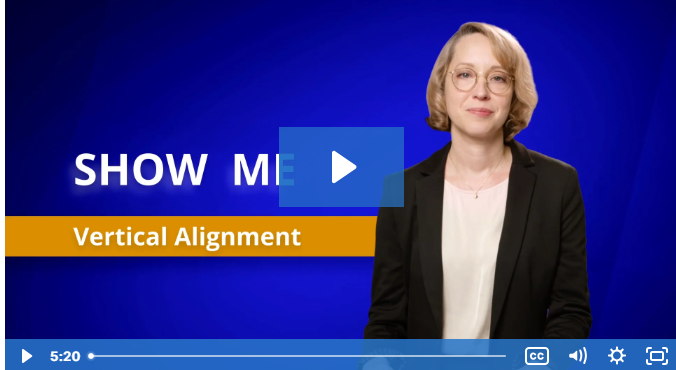
Inclusion Practices for Students with Complex Support Needs
This collection was created to support a team in transitioning students from self-contained to more inclusive environments.

TEA, “Social Skills Training Module”
Social skills training (SST) involves group or individual instruction designed to teach learners to appropriately interact with typically developing peers. Most social skills meetings include instruction on basic concepts, role-playing or practice, and feedback to help learners acquire and practice communication, play, or social skills to promote positive interactions with peers.
ESC 20, Low Incidence Disabilities (LID) Resource Site
This site contains information on Monthly Life Skills Instructional Guides, Rubrics for Effective Practices, Tips and strategies, self-paced courses, and more! Discover supports for classroom implementation and access state and national resources for students in self-contained classrooms.
TEA, Strategies for Working with Students with Autism in the General Education Setting
If you only have 30 minutes for professional development, this series is for you! Presenter Dr. Amanda Boutot, BCBA-D, is a Board Certified Behavior Analyst (BCBA) and an Associate Professor in the Department of Curriculum and Instruction at Texas State University.

TEA, "Classroom Organization: The Power of Structure for Individuals with Autism Spectrum Disorders"
This online course is an overview of how organizational structure can clarify expectations and reduce anxiety in many people with autism. This course will help you learn about the neurobiological basis of autism and its connection to structured learning environments. In addition, you will learn how to organize physical space, dimensions of time and learning activities to positively impact student success.
TEA, "Structured Work Systems": Texas SPED Support
This article provides specific information on the implementation of structured work systems including when, where, and how to use in creating a structured learning environment.
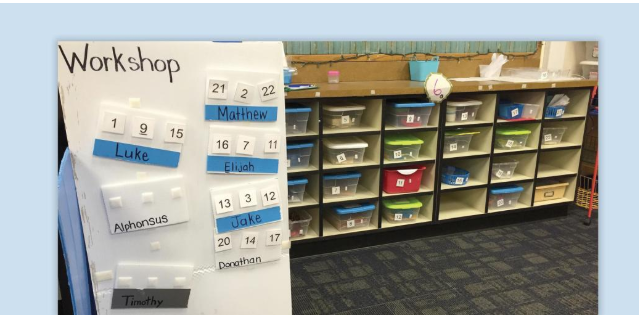
Competency 6: Apply knowledge of strengths and needs of students to plan appropriate, effective, meaningful, and challenging instruction.
TEA, "Accommodations and Modifications"
This video clearly defines and differentiates between accommodations and modifications in the educational setting, offering practical examples for each. Educators and instructional leaders will gain a comprehensive understanding of how to effectively implement these strategies to meet the diverse needs of students, fostering an inclusive learning environment.
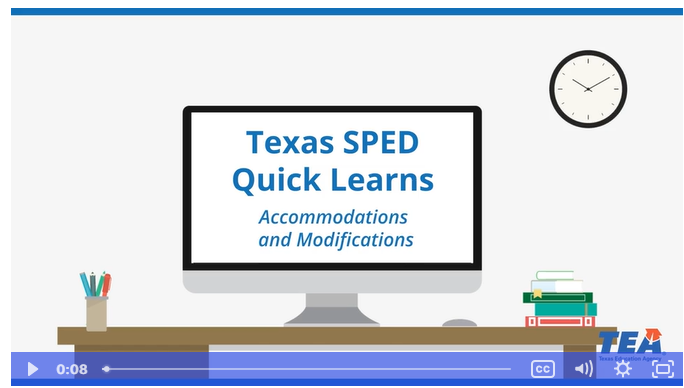
This webpage contains terminology and different types of supports and information regarding accommodations and modifications, including links to programs, examples, and assessments.
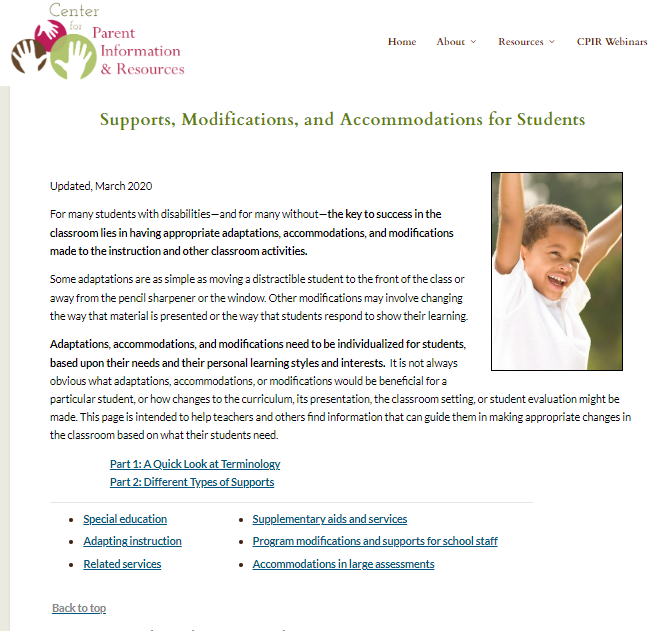
TEA, Region 13 "Accommodation Central"
Accommodations Central is an online site that provides access to various accommodations and steps for implementation. Teachers may look by subject and select an accommodation that is suitable for the student. In addition, information regarding the use of the accommodation is provided, such as: if the accommodation is allowable on state assessment, if it is included with the use of Assistive Technology, different areas of disabilities that accommodation can assist, examples of what the accommodation looks like, and how to implement the accommodation.
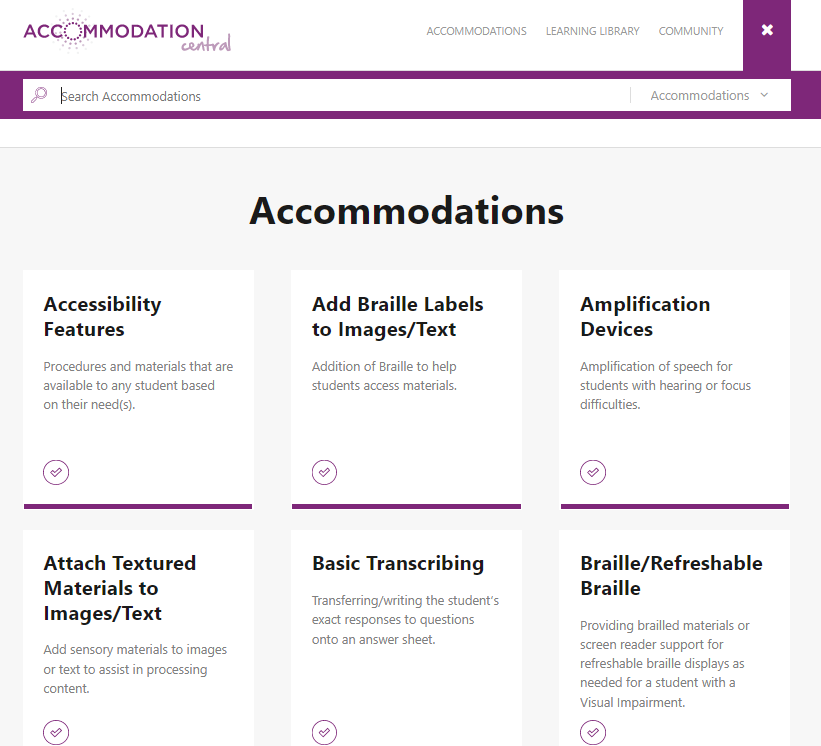
Explore the Texas AT Support website, a vast library of essential tools and support for educators to enhance learning for students with diverse needs. You’ll discover valuable information on how to integrate these assistive technologies effectively, including guides on selecting the right tools, training materials for both students and staff, and examples of best practices.
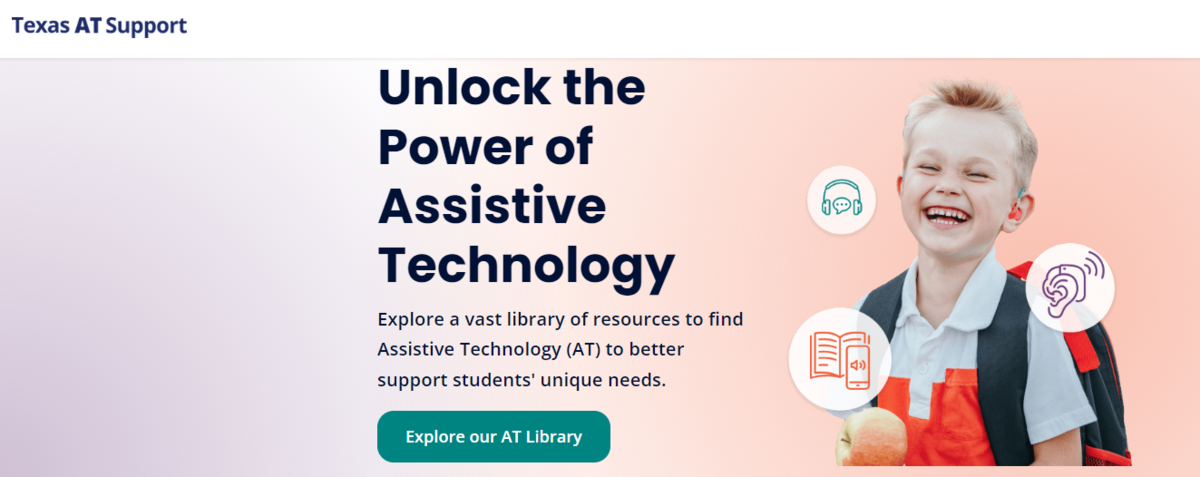
Graduation and Special Education: Frequently Asked Questions
This Frequently Asked Questions (FAQ) document provides guidance related to graduation requirements for students receiving special education services in Texas, as outlined in the 19 Texas Administrative Code (TAC) §89.1070. These questions and answers clarify expectations and are intended to support staff at local educational agencies (LEAs) in navigating the graduation process for students with disabilities.
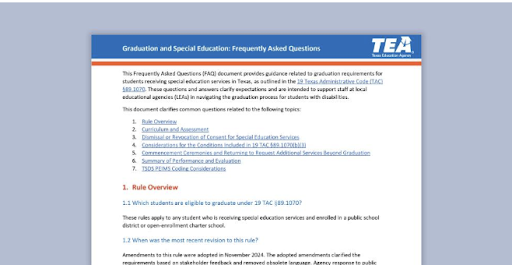
The Texas Legal Framework - Graduation
Authorities: 34 CFR Part 300; Texas Education Code; Texas Family Code; 19 TAC Chapters 74, 89, and 101; House Bill 3
National Center on Intensive Intervention " Features of Explicit Instruction"
NCII, through a collaboration with the University of Connecticut and the National Center on Leadership in Intensive Intervention and with support from the CEEDAR Center, developed course content focused on enhancing educators’ skills in using explicit instruction. This course includes four modules that can support faculty and professional development providers with instructing pre-service and in-service educators who are learning to implement explicit instruction.
In this video, Ayo Jones demonstrates how to differentiate a math lesson for a diverse group of learners.

This module explores the importance of scaffolding and modeling for students as they learn new skills and strategies.
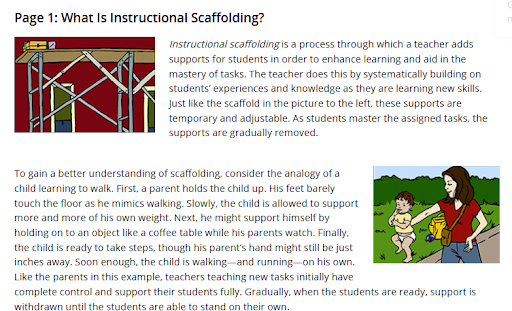
The CEEDAR Center: High-Level Practices for Students with Disabilities
The HLPs are organized into four domains: Collaboration, Data-Driven Planning, Instruction in Behavior and Academics, and Intensify and Intervene as Needed. Each domain has pillars and embedded practices infused with culturally inclusive pedagogies. This site will provide the initial grounding and thinking for how professionals can think about HLPs, reorient toward the most essential (pillar) practices, and demonstrate how the remaining HLPs (embedded) practices function to support implementation. HLPs are meant for ALL educators to support all students, hence resources are provided for a variety of roles of those implementing practices.
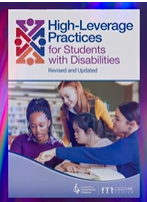
TEA, “Instructional Strategies for Working with Students with Down Syndrome”: Texas SPED Support
In this video, Ayo Jones reviews some solid instructional strategies for working with students with Down syndrome. This video aligns with the Rubric of Effective Practices from TX CAN Indicator III: Classroom Climate - Component 11 Indicator IV: Differentiated Instruction - Components 1, 3, and 4, and Indicator V: Social Communication - Components 1 and 4.
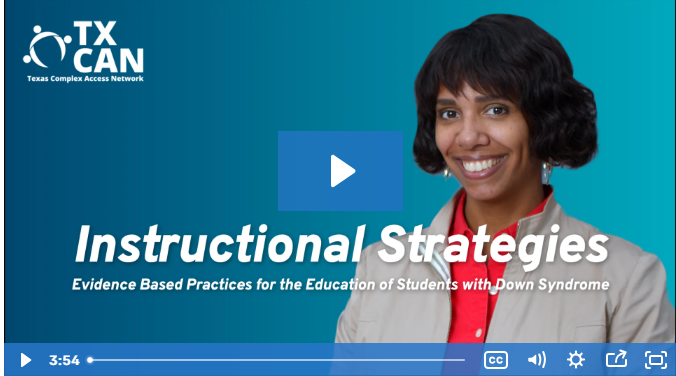
In this video, Ayo Jones discusses how to get started with learning stations.
TEA, “Universal Design for Learning Collection”: Texas SPED Support
In this course, you will get a basic overview of the UDL framework, including its structure, curricular components, and the research behind it. You will understand the alignment between the three brain networks for learning and the three UDL guiding principles. This course is the first of five modules in which you will explore a teacher’s journey through several days of professional learning and self-reflection.
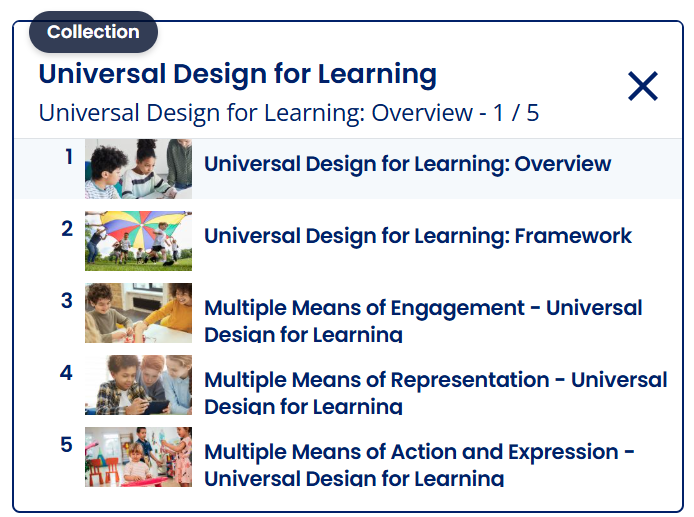
TEA, Considering Assistive Technology in the Individualized Education Program Process
The Texas 4-Step Model provides consistent structure for Assistive Technology (AT) consideration as ARD committees consider the special factors in the development, review and revision of Individualized Education Programs (IEPs). Although the consideration of special factors is generally a relatively brief process, it does require significant thought. The Texas 4-Step Model provides a consistent structure for AT consideration to occur for any student. The Texas 4-Step Model incorporates best practices in AT consideration as described by the Quality Indicators for Assistive Technology (QIAT).
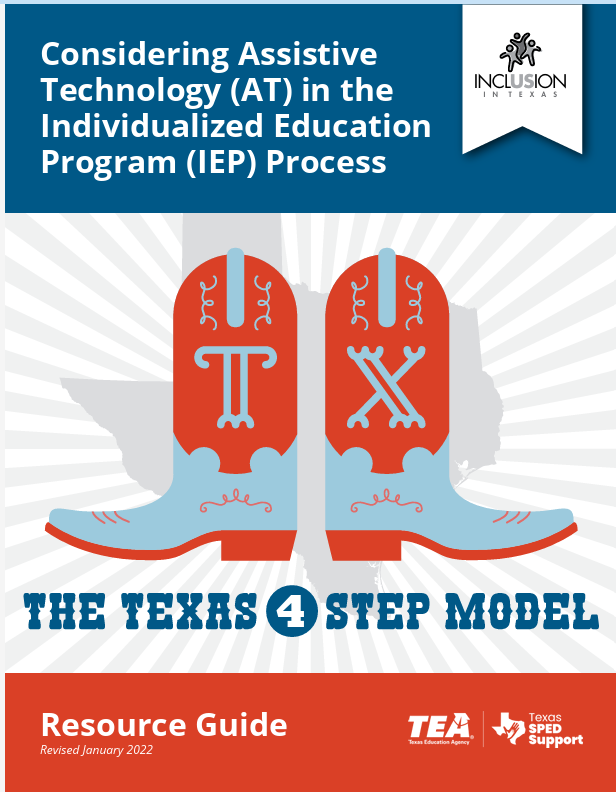
TEA, Technology Integration for Students with Dyslexia and Related Disorders
The Texas Education Code (TEC) §38.0031 mandates the development of a Classroom Technology Plan specifically designed to support students with dyslexia. This guide aims to provide educators, administrators, and stakeholders with a comprehensive understanding of the legislative requirements and the practical steps necessary to integrate effective technological solutions in the classroom.

TEA, "Autism Spectrum Disorder and Assistive Technology”
This series examines the common challenges for students with autism in the areas of organization, social, literacy, and writing and offers assistive technology devices and supports that may help students succeed. This series was created by the Ohio Center for Autism and Low Incidence (OCALI) in partnership with the Texas Statewide Leadership for Autism Training and the Texas Education Agency.
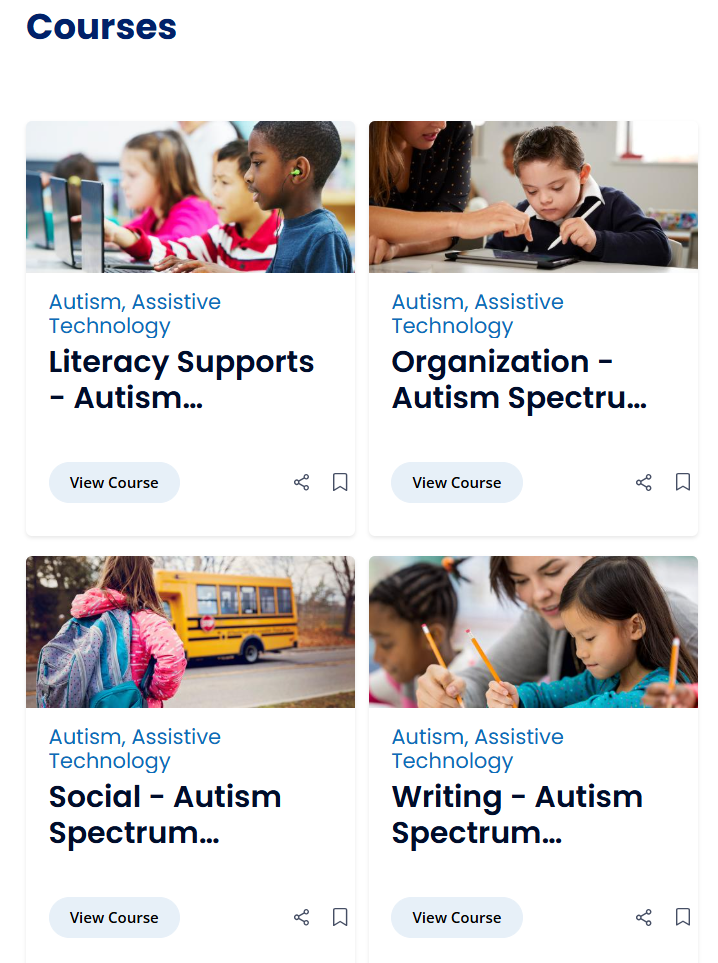
This 90-minute module describes how teachers can help students stay on task by learning to regulate their behavior. The four strategies discussed are self-monitoring, self-instruction, goal-setting, and self-reinforcement (est. completion time: 1.5 hours).
This webinar focuses on engaging all learners through active classroom experiences. Participants will learn a variety of strategies to build relationships with students, create a learning environment that encourages active participation, and check for student understanding – all of which maximize student outcomes. We will discuss informal and deliberate methods to assess what students are learning during instruction to collect data and make informed decisions.

TEA, "Strategies in Action" Series
A series of 25 short videos displaying concrete strategies and actionable techniques that can be implemented in the classroom to enhance the educational experience of students with autism.
TEA ”Mathematic Tasks For Students with Motor Difficulties”: Texas SPED Support
In this video, Cheryl Jorgensen, an expert on inclusion for students with the most complex access needs, addresses mathematics tasks for students with motor difficulties. This video aligns with the Rubric of Effective Practices from TX CAN Indicator IV: Differentiated Instruction.
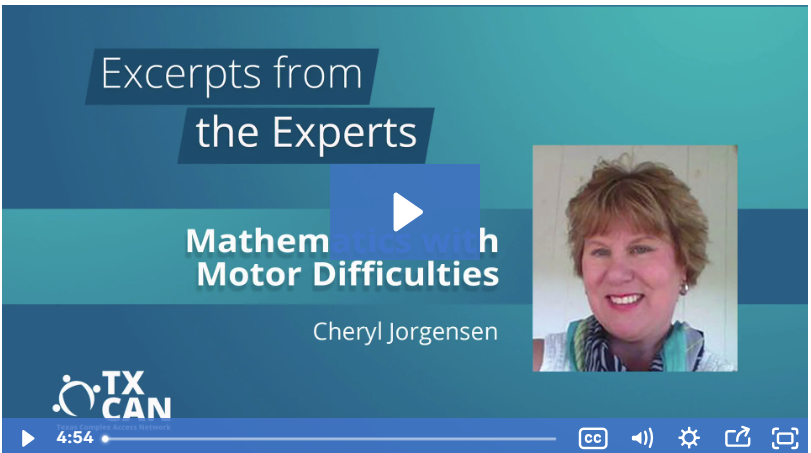
Competency 7: Apply knowledge of strategies to create effective and safe learning environments, methods to promote students' positive behavior, and supports to develop and measure behavioral interventions.
U.S. Department of Education, Positive Behavior Interventions and Supports
This website that supports schools, districts, and states to build systems capacity for implementing a multi-tiered approach to social, emotional and behavior support to improve the effectiveness, efficiency, and equity of schools and other agencies. PBIS improves social, emotional, and academic outcomes for all students, including students with disabilities and students from underrepresented groups by offering a variety of videos, professional development webinars, tools, publications and forums.
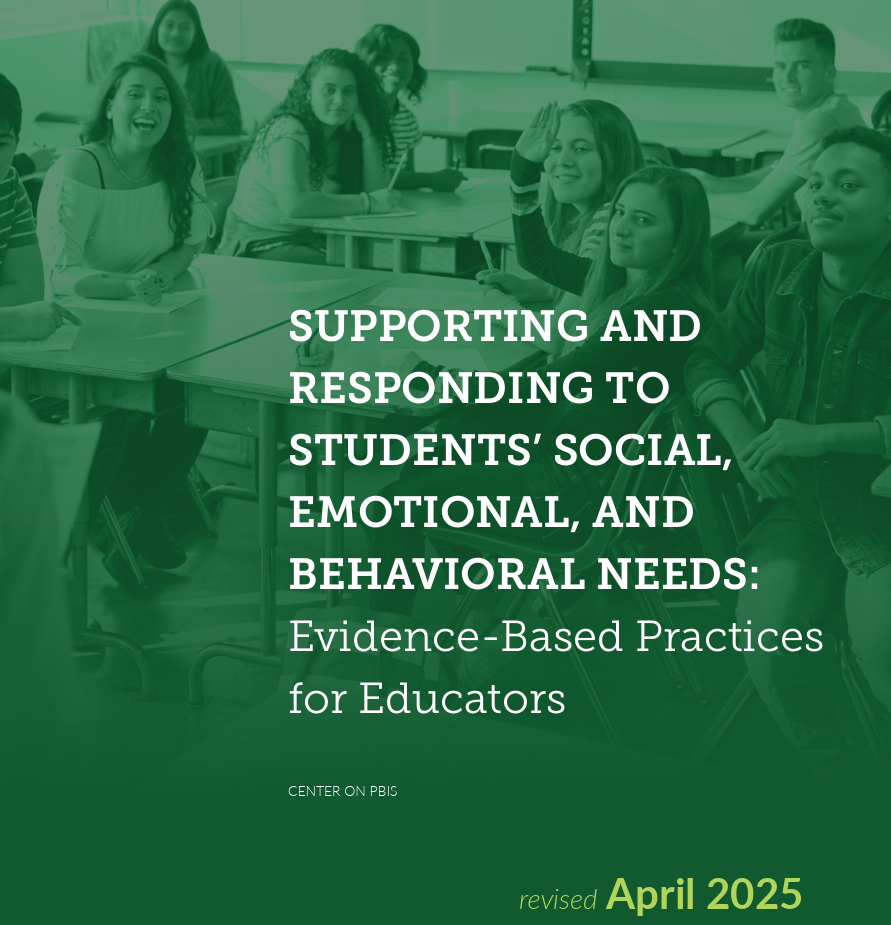
TEA, "Positive Behavioral Interventions and Supports"
This course will develop your understanding of positive behavioral interventions and supports (PBIS). Upon completion, you will be able to explain the impact of problem behaviors, describe PBIS within a multi-tiered system of supports, and define the core principles of PBIS. Furthermore, you will learn the five key elements of PBIS and how it functions across universal, targeted, and intensive tiers to improve school effectiveness.
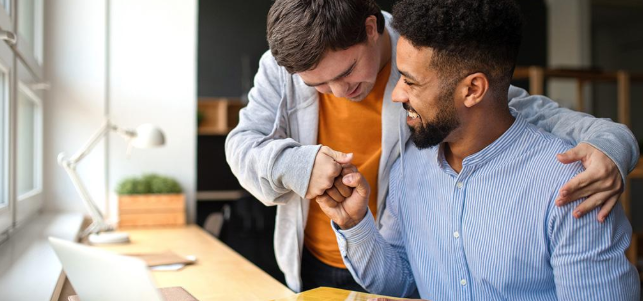
Before trying to "fix" a child's behavior, try adjusting the learning environment to accommodate all neurodiverse learners. Good advice from Dr. Barry Prizant, Autism consultant and author of "Uniquely Human."
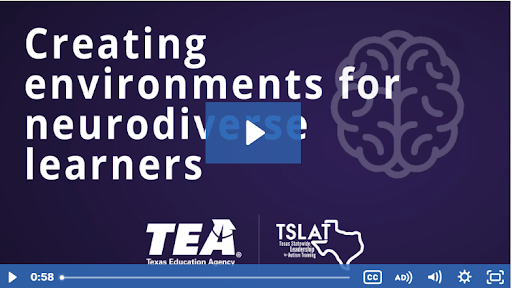
TEA, How do I implement a sensory area?
Implementing a calm-down or sensory area can be beneficial to students during the instructional day. Where do you begin? Pennington explains.
The TIER Behavior module comprises eight pathways, or trainings. These pathways aid educators in implementing evidence-based practices for behavior within a multi-tiered system of supports (MTSS) framework.
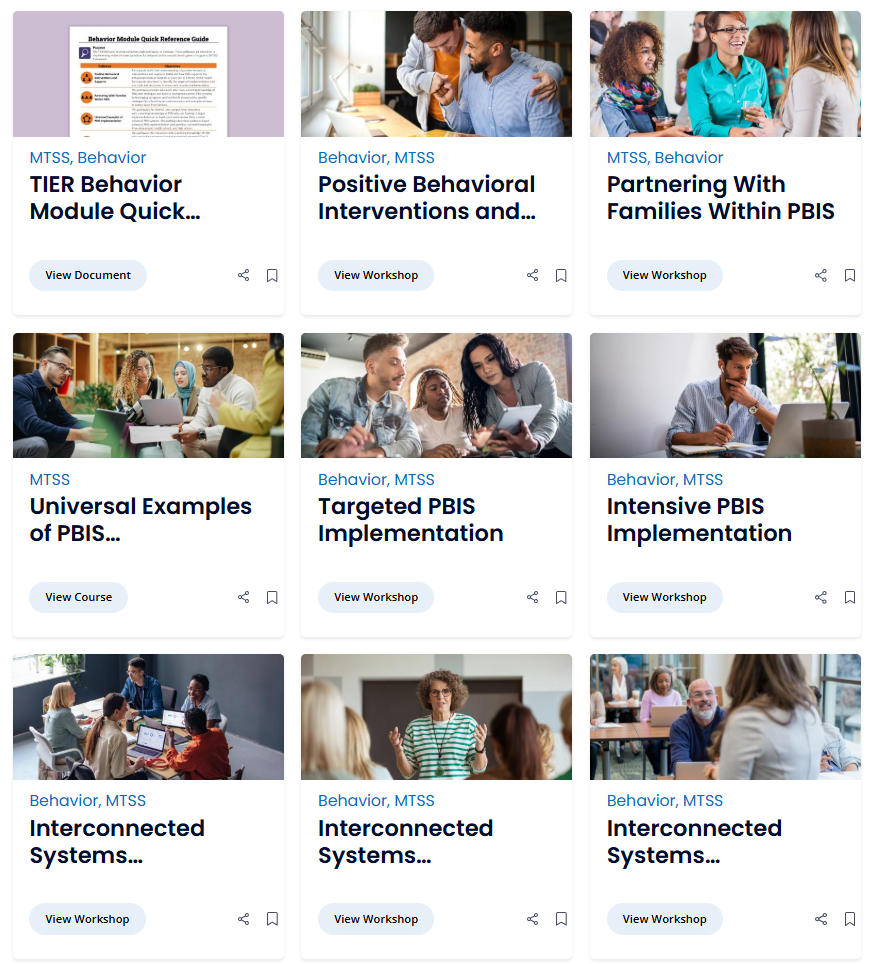
TEA, Supporting Student Transitions
This video shows one educator explaining how she supports students who move in and out of her classroom.
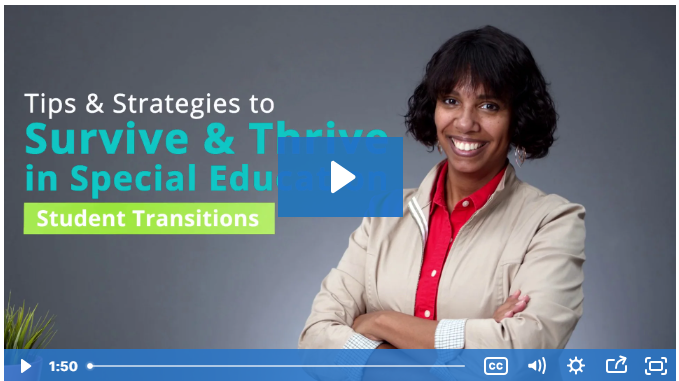
The IRIS Center, Peabody College, Vanderbilt University "Behavior Management (Part 1, Elementary)"
Developed specifically with primary and intermediate elementary teachers in mind (e.g., K-5th grade), this module reviews the major components of a classroom behavior management plan (including rules, procedures, and consequences) and guides users through the steps of creating their own classroom behavior management plan (est. completion time: 2 hours).

The IRIS Center, Peabody College, Vanderbilt University "Behavior Management (Part 2, Secondary)"
Developed specifically with middle and high school teachers in mind (e.g., 6th-12th grade), this module reviews the major components of a classroom behavior management plan (including rules, procedures, and consequences) and guides users through the steps of creating their own classroom behavior management plan (est. completion time: 2 hours).

TEA, Functional Behavior Assessment (FBA,) and Behavior Intervention Plan (BIP) Issues and Strategies
“Why won’t he behave?” “When are you going to fix her behavior?” “Do I really have to do this BIP?” “You really want me to collect data?” These are just some of the questions district-level specialists may hear when working with teachers and para-educators to solve behavior challenges in the classroom. As a district-level specialist, LSSP, SLP, teacher, or other related service provider, you know the importance of a Functional Behavior Assessment (FBA) and a quality Behavior Intervention Plan (BIP), and you probably conduct them on a regular basis.
TEA, Functional Behavior Assessment (FBA)
Functional behavior assessment (FBA) is a systematic set of strategies that is used to determine the underlying function or purpose of a behavior, so that an effective intervention plan can be developed. FBA consists of describing the interfering or problem behavior, identifying antecedent or consequent events that control the behavior, developing a hypothesis of the behavior, and testing the hypothesis. Data collection is an important part of the FBA process. Often, educators use functional communication training (FCT), differential reinforcement, response interruption/redirection, extinction, and stimulus control/environmental modification to address these behaviors in learners with autism.
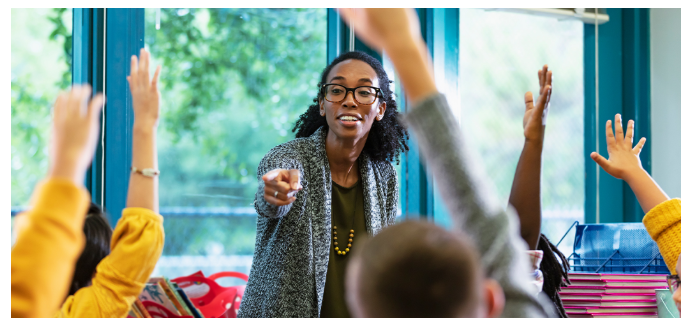
TEA, How detailed should Behavior Intervention Plans (BIPs) be?
How detailed should your behavior intervention plans be? Should parents be involved in the process as well? Pennington explains.